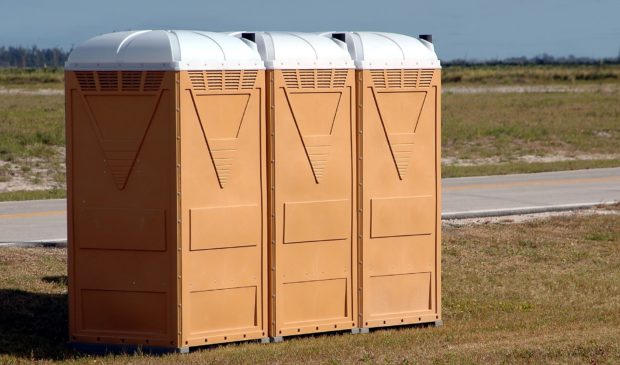Public toilet pilot program flush with users
Thursday, January 18, 2018 by
Caleb Pritchard The Downtown Commission learned on Wednesday evening that the city’s ongoing public toilet pilot program has served more than 8,000 users since its launch in late September.
The official total through Jan. 2, according to city engineer David Magaña, is 8,355 users who have taken advantage of a mobile toilet that has been placed at three locations in the central business district.
“I think the data is supporting that there is a need for something like this downtown,” Magaña told the Austin Monitor after he briefed the commission. “But the whole purpose of the program, and based on our research, was we need to identify a good place for the unit, the highest and best use, if you will.”
The pilot program grew out of a resolution City Council passed in January 2016 that directed the city manager to explore options and downtown locations for free 24-hour public toilets. A subsequent resolution later that June called for the purchase of two mobile toilets and an expedited process to procure a permanent facility. The resolution specifically cited as an example the Portland Loo, a public toilet system used in Portland, Oregon.
After stakeholder meetings in 2016 and 2017, the pilot program finally launched on Sept. 28 last year. The trailer-mounted toilet was first placed along Interstate 35’s southbound frontage road near East Sixth Street. There it stayed through Nov. 6, a total of 40 days.
In that period, 3,417 users took advantage of the facility. That translates to approximately 85 per day and 3.5 per hour.
The second location in the 500 block of Brazos Street saw similar numbers. Over the course of 36 days at the site, 3,399 people used the mobile toilet, or about 94 per day and four per hour.
The toilet currently sits in the 600 block of Red River Street. During its first 21 days there, it had been used 1,539 times. That’s 73 daily users and three hourly users. Despite those slightly lower numbers, Magaña told the Monitor that crews have increased their daily pumping of the toilet’s tanks from two to three at the new location.
In addition to determining a proper site for a permanent toilet, the program is also designed to gather key data, Magaña explained to the commission. Details about misuse, restocking, emergency calls, routine cleaning, non-routine cleaning and the number of parents with children who use the facilities are being tracked alongside the daily use counts, he said.
The pilot is being run in partnership with the Downtown Austin Alliance, which is providing its downtown ambassadors to attend the mobile toilet 18 hours a day. Magaña also explained that DAA staff are collecting data on the impact of the toilet by monitoring the sites in 30-day chunks before, during and after the unit is deployed at each location.
“With regards to location one (on the I-35 frontage road), we did see a decrease in the number of people who had defecated in public rights of way,” Magaña reported.
On Jan. 31, the toilet will relocate to Colorado and West Fourth streets where it will stay through the end of the pilot program at the end of February. Once the program is over, Magaña’s team will prepare draft recommendations that are scheduled to be on the city manager’s desk by April. The city will also have to procure a permanent toilet unit – which could cost as much as $100,000 – and identify a public toilet program manager.
In the interim, Magaña said there are no plans to mothball the mobile toilet unit once the pilot wraps up just before the South by Southwest festival.
“As long as funding’s available, we’ll keep it out there,” he said. “We don’t want to provide a gap between having the unit there and a permanent facility.”
The Austin Monitor’s work is made possible by donations from the community. Though our reporting covers donors from time to time, we are careful to keep business and editorial efforts separate while maintaining transparency. A complete list of donors is available here, and our code of ethics is explained here.
You're a community leader
And we’re honored you look to us for serious, in-depth news. You know a strong community needs local and dedicated watchdog reporting. We’re here for you and that won’t change. Now will you take the powerful next step and support our nonprofit news organization?



